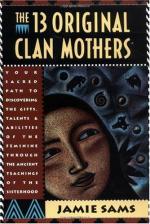|
This section contains 799 words (approx. 3 pages at 300 words per page) |

|
A New World.
Beginning with the first English settlements at Jamestown and Plymouth, settlers relied on the natives for food and knowledge of agricultural methods. The Pilgrims learned to fertilize the soil with small fish. The land was so plentiful, however, that many farmers did not bother to fertilize; when the soil gave out, they would clear more land. The first colonists did not use plows, but hoes, spades, and sturdy sticks. After 1650 more farmers used wooden plows with an iron plowshare, a blade that cut deep into the soil. Plowing depended on the soil and surrounding vegetation. Hard and stony soil where the white oak grew required plowing. Land dominated by beech, maple, and birch denoted a rich soil that would grow corn without plowing. Pine grew in a sandy soil that, though often not needing the plow, lost its fertility within a...
|
This section contains 799 words (approx. 3 pages at 300 words per page) |

|




